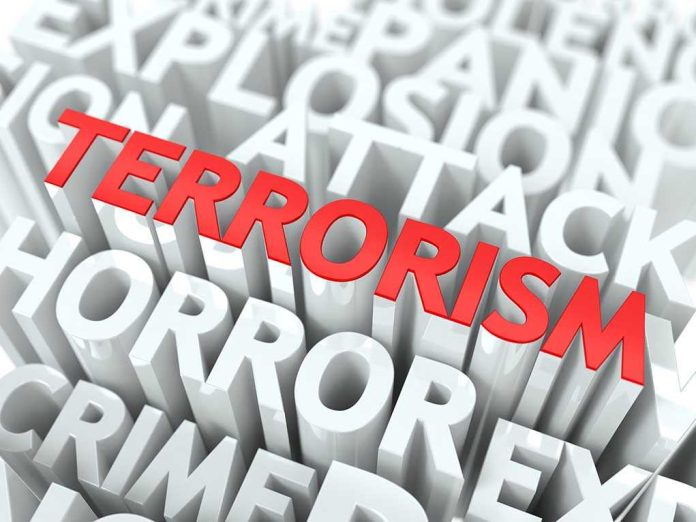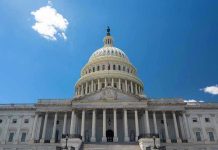
In an era of escalating global tensions, the lessons from Pearl Harbor and 9/11 are more crucial than ever as Iranian “sleeper cells” potentially position themselves for retaliation against America.
Key Takeaways
- Americans should remain alert but not paranoid, focusing on awareness and preparedness rather than fear
- The “Run, Hide, Fight” model provides practical survival strategies during active threat situations
- Law enforcement has intensified security measures, including increased patrols and real-time intelligence tools
- Comprehensive resources like the Handbook of Terrorism Prevention and Preparedness offer valuable guidance
- Community vigilance is essential – report suspicious activities and stay informed through credible sources
The Current Threat Landscape
With rising concerns about potential terrorist attacks on American soil, particularly from Iranian “sleeper cells” seeking retaliation for military operations, citizens find themselves in a heightened state of awareness. This vigilance echoes historical periods following Pearl Harbor and 9/11, when Americans recognized the critical importance of community preparedness. However, experts emphasize that awareness should not devolve into paranoia. Instead, a measured approach focused on education and preparation provides the most effective defense against potential threats.
Social media platforms have become double-edged swords in crises, serving as valuable information sources while simultaneously spreading misinformation. The proliferation of AI-generated content has further complicated the information landscape, making it increasingly difficult to distinguish fact from fiction. Security experts recommend following reputable sources such as government platforms and established news organizations while maintaining a critical eye toward unverified claims that could heighten unnecessary panic.
— Chaos Coordinator (@idontexistTore) June 19, 2025
Personal Safety Strategies
Individual preparedness forms the foundation of community security. Simple yet effective practices include reducing distractions in public spaces, maintaining situational awareness, and mentally rehearsing emergency scenarios. The Department of Homeland Security and law enforcement agencies consistently promote the “See something, say something” principle as a first line of defense against potential threats. This approach encourages citizens to report suspicious activities without hesitation, recognizing that community vigilance often prevents attacks before they occur.
“See something, say something,” said Matt Fagiana, a law enforcement veteran
For active threat scenarios, security experts widely recommend the “Run, Hide, Fight” model as the most effective survival strategy. This approach prioritizes escape when possible, seeking secure shelter when escape routes are blocked, and fighting back as a last resort. Government agencies like the Federal Protective Service provide detailed guidance through initiatives such as “Your Safety, Our Priority,” which includes training videos and active threat awareness resources designed for civilian use in emergencies.
“Run, Hide, Fight,” said Matt Fagiana, a law enforcement veteran
Comprehensive Resources and Government Response
The International Centre for Counter-Terrorism has developed the Handbook of Terrorism Prevention and Preparedness, a comprehensive resource spanning over 1,000 pages across 35 chapters. This extensive guide addresses everything from conceptual terrorism prevention to practical countermeasures, including sections on preventing radicalization in prisons, refugee camps, educational institutions, and social media platforms. The handbook represents one of the most thorough approaches to understanding and preventing terrorist activities before they materialize.
“The Federal Protective Service’s mission is clear: to prevent, protect, respond to, and recover from acts of terrorism and other hazards threatening the federal government’s essential services, ensuring the continuity of the U.S. Government,” stated the Federal Protective Service
Behind the scenes, law enforcement agencies have significantly enhanced their counterterrorism efforts. These measures include increased patrols in vulnerable areas, deployment of advanced surveillance technologies, and implementation of real-time intelligence tools to identify and neutralize threats. The Cybersecurity and Infrastructure Security Agency has also expanded its “Secure Our World” program, providing resources for online safety to combat digital threats. These coordinated efforts form a comprehensive security network that operates largely outside public view but provides crucial protection for American communities.
Community Resilience: Our Shared Responsibility
The most effective counterterrorism strategy remains a collective effort between government agencies and informed citizens. History has repeatedly demonstrated that community preparedness significantly reduces casualties during attacks and accelerates recovery afterward. Preparation should occur well before crises emerge, including family emergency plans, communication strategies, and knowledge of local resources. These measures not only enhance personal safety but also contribute to broader community resilience in the face of threats.
President Trump’s administration has consistently emphasized strengthening America’s counterterrorism capabilities while encouraging citizen participation in security efforts. The lessons from Pearl Harbor and 9/11 remind us that vigilance is not paranoia but practical patriotism. By staying informed, remaining alert, and supporting professional security operations, Americans continue their longstanding tradition of determined resilience against those who threaten our safety and values. This balanced approach of awareness without fear represents the most effective response to current and future security challenges.







